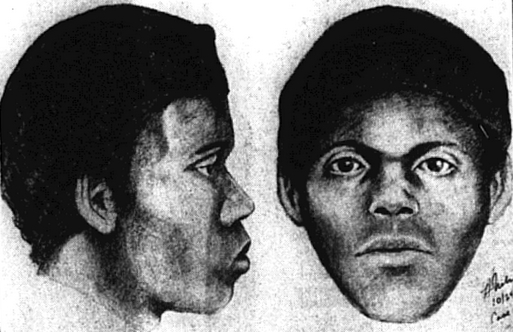In the vast, tragic tapestry of Canada’s Missing and Murdered Indigenous Women and Girls (MMIWG) crisis, some stories cut through the statistics with a chilling clarity. The case of Amber Tuccaro is one such story. She was a 20-year-old mother, a member of the Mikisew Cree First Nation, whose life was stolen in 2010. What makes her case so profoundly haunting is not just the loss of a vibrant young woman, but the existence of a single, terrifying piece of evidence: a one-minute audio recording of the last moments of her life, a desperate plea that captured the voice of her presumed killer.
Her story is a heartbreaking saga of a family’s unwavering fight for justice, a police investigation plagued by devastating errors, and a chilling voice on a tape that has echoed across a nation for over a decade, still waiting to be identified.
A Mother Vanishes
On August 17, 2010, Amber Tuccaro flew from her home in Fort McMurray to Edmonton, Alberta, for a short trip. She was accompanied by her 14-month-old son, Jacob, and a female friend. They checked into a motel in Nisku, a small hamlet just south of the city. Amber, described by her family as a devoted and loving mother, was excited for a brief getaway.
The following evening, on August 18, Amber decided to hitchhike into Edmonton. It was a decision that would prove fatal. She accepted a ride from an unknown man, leaving her son in the care of her friend at the motel. She was never seen alive again. When Amber failed to return, her mother, Vivian “Tootsie” Tuccaro, was immediately alarmed. She knew her daughter would never abandon her son. She reported Amber missing to the Leduc detachment of the Royal Canadian Mounted Police (RCMP), expecting an urgent and thorough investigation. What she received instead was the beginning of a years-long nightmare of institutional failure.
“You’d Better Not Be Taking Me Anywhere I Don’t Want to Go”
The investigation languished. Then, two years after she vanished, the RCMP made a stunning public release. They had a piece of audio—a fragment of a cell phone call Amber had made from inside the car of the man who picked her up. In the chilling 61-second clip, Amber’s voice is filled with growing fear and suspicion.
“Where are we going?” she asks the person on the other end of the line, who is believed to be her brother. The driver’s voice, calm and deceptively reassuring, can be heard in the background.
“Just north of Beaumont, a back road,” the man says.
Amber’s voice betrays her rising panic. She repeats his words, a clear sign of her distress. “You’d better not be taking me anywhere I don’t want to go,” she says directly to the driver, her voice a mixture of defiance and terror. “I want to go to the city.”
The man insists they are heading towards “50th Street,” a main thoroughfare in Edmonton. But police believe this was a lie. Based on cell tower data, they determined the car was actually heading south, deeper into the rural county, away from the city lights and into the isolated darkness. The call ends abruptly, and with it, the last known record of Amber Tuccaro’s life.
Just four days after the RCMP released this haunting audio to the public in August 2012, horseback riders stumbled upon human remains in a remote, wooded field in Leduc County. Dental records soon confirmed the family’s worst fears. It was Amber.
A Botched Investigation
The discovery of Amber’s remains confirmed she was a victim of homicide, but it also cast a harsh light on the profound failures of the RCMP’s initial investigation. For Amber’s family, the pain of their loss was compounded by a sense of betrayal by the very people sworn to find her.
The litany of errors was devastating:
- Initial Dismissal: When Vivian Tuccaro first reported her daughter missing, she was allegedly told by police that Amber was “probably out partying” and that she had to wait 24 hours to file a report. This response reflected harmful stereotypes often faced by Indigenous families.
- Unreasonable Delays: An independent review later found that an entire month passed before the Leduc RCMP made any significant effort to investigate her disappearance. Key witnesses, including the friend Amber had traveled with, were not interviewed for four months.
- Removed from a Database: Inexplicably, Amber was removed from the missing persons database for a month based on unconfirmed sightings, effectively halting the official search. Her mother had to fight to get her name reinstated.
- Destruction of Evidence: In a shocking failure of police procedure, Amber’s personal belongings, which had been collected from her motel room, were accidentally destroyed by investigators. This act eliminated any possibility of finding potential forensic clues on her possessions.
In 2018, a federal review concluded that the RCMP’s investigation was “deficient.” The following year, the RCMP issued a formal apology to the Tuccaro family. Deputy Commissioner Curtis Zablocki admitted, “the initial missing person’s investigation was not our best work and was not in line with our established policies and guidelines… On behalf of the RCMP, I am truly sorry.”
A Lingering Voice and an Unsolved Crime
To this day, Amber Tuccaro’s murder remains unsolved. The voice on the tape is the single most important clue, a direct link to the man who was with her in her final moments. Over the years, thousands of tips have poured in. Several women have come forward claiming to recognize the voice, some even identifying the same man, but no arrests have ever been made.
The case has become a symbol of the MMIWG crisis in Canada, a stark example of how systemic failures and societal biases can have deadly consequences. Amber’s mother, Tootsie, and her brother, Paul Tuccaro, have become tireless advocates, fighting not only for justice for Amber but for all Indigenous families who have lost loved ones.
“Some dirty bastard out there stole my baby’s life, from her family, from her son,” Tootsie Tuccaro said at a press conference, her voice heavy with grief. “Please come forward if you know something about Amber’s killer… I beg you.”
The voice on the tape is a ghost—a calm, malevolent presence that continues to haunt investigators and the public. He is a father, a brother, a son, or a friend to someone. And somewhere out there, someone knows who he is. Until they come forward, the search for justice for Amber Tuccaro continues, driven by a family’s love and the echo of a young woman’s last, desperate plea.
Want to explore the shadows even deeper? For more chilling cases like this, visit SinisterArchive.com, where the legends are real.




